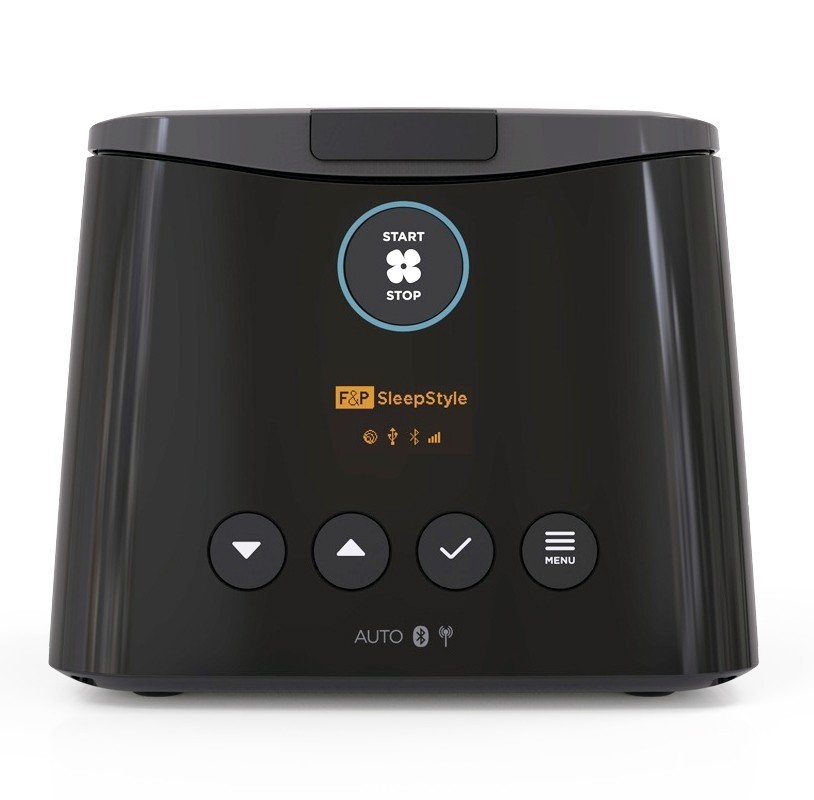Everything you need to know about CPAP Humidification
What Does a CPAP Humidifier do?
If you find yourself waking up with a dry mouth, nose or throat, then a humidifier should instantly solve that problem and others. A humidifier houses a water chamber, which it heats to add moisture to the air provided by your machine. By adding moisture to the air provided by your CPAP machine, it helps to keep your mouth from drying out throughout the night. Similarly, if you find the air from your CPAP to be cold and uncomfortable, a humidifier adds warmth to the moist air, and this should make your therapy more comfortable.
It is clinically proven, through several studies, that humidification improves compliance and helps CPAP and BiPAP users avoid suffering from a dry nose, mouth and throat. A humidifier can be extremely beneficial for those who are often visiting countries with drier climates. Still, even in the UK and colder parts of Europe, CPAP users report significant benefits from a humidifier added to their setup.
Who needs a humidifier?
If you breathe through your mouth, you probably will need a full mask, and this increases the chance you will need a humidifier. When you breathe through your nose, the hairs in the nasal airway conditioning the air with heat and humidity before it enters the lungs. When you breathe through your mouth, this process is not present and can lead to uncomfortable dryness. One other note is that allergies and illness can make the effects worse.
They are usually an additional piece of equipment that locks onto or into your main machine, but some CPAP machines come with a humidifier built-in. Most machines will have their specific humidifier available.

Integrated and optional humidification
For most machines, humidifiers can be purchased at a later date and integrated separately, so you can order your device without the humidifier and see how you go.
However, if you do find yourself already waking up with a dry mouth before you’ve started CPAP therapy and are new to it, then CPAP is likely to make this condition worse, and we would recommend purchasing one immediately.
If you know you need a humidifier, then it could be worth considering a machine with a humidifier built-in. An example of this is the Fisher and Paykel SleepStyle. This design adds greater convenience, and they’re often more compact than having two separate units (space on your bedside table).
Humidifier Rainout
A possible drawback of humidified air is from, what we call Rainout, the proper name for condensation build up in the tubing and mask. It is likely to happen because the tubing and mask will be at room temperature (20–22 °C (68–72 °F)), causing the warmer air from the machine to cool and condense as a result. Rainout can result in a gargling noise or just general discomfort; it is particularly common in the winter months.
One solution we offer is a hose fleece, which provides the CPAP machine’s hose with insulation (it can also make the tubing physically more comfortable to touch). Our second and more comprehensive option is to use a heated CPAP hose, such as the Hybernate Heated Breathing Tube. The heated hose ensures the temperature difference inside the tubing is negligible, preventing Rainout and ensuring the air reaches you at the correct temperature.
Humidifier Advice
- You should only use distilled water in your humidifier as this prevents bacteria reaching your therapy airflow.
- It is advised to use fresh water daily and to clean your water chamber daily.
- Machines with built-in humidifiers can be delicate and require extra care in transit. Therefore it is advised the humidifier is entirely free of water – and preferably packed separately if you are travelling with your CPAP machine.
- Consider taking a battery pack if you plan to travel with your supplies. Please note using a humidifier will significantly drain your battery. Alternatively, you can take waterless humidification or choose a travel machine.
